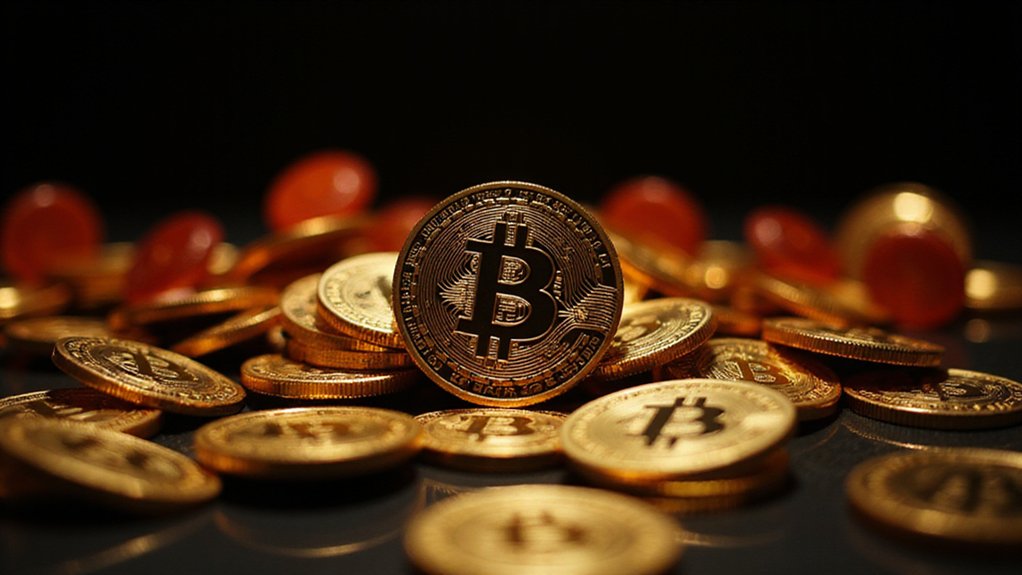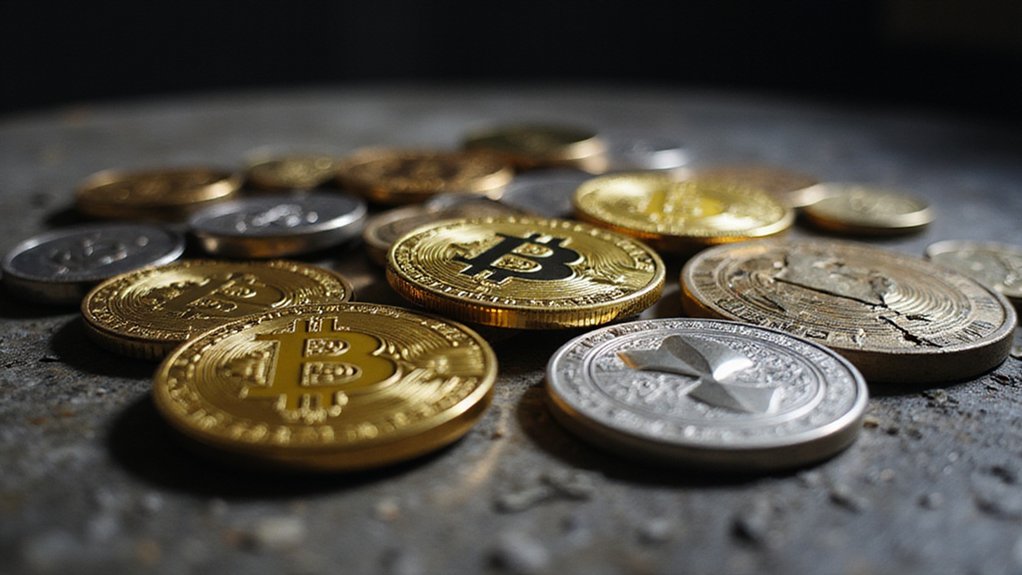How swiftly the mighty can fall in the unforgiving arena of digital assets, where yesterday’s sold-out sensation becomes tomorrow’s cautionary tale.
The digital marketplace shows no mercy to fallen stars, transforming yesterday’s golden investments into today’s bitter lessons.
The Trump Digital Trading Cards, launched with considerable fanfare on December 15, 2022, epitomize this precipitous trajectory from triumph to tribulation.
Initially priced at $99 per NFT on the Polygon blockchain, the collection’s 45,000 units vanished within twelve hours—a feat that suggested robust demand and market confidence.
The rapid sellout appeared to validate the intersection of political celebrity and blockchain technology, prompting subsequent releases: Series 2 with 47,000 cards in April 2023, followed by the MugShot Edition featuring 47 portraits in December 2023.
Yet beneath this surface success lurked the inherent volatility that plagues NFT markets.
Post-launch valuations experienced significant deterioration, transforming what seemed like shrewd investments into sobering reminders of speculative excess. The floor price reached $200 on OpenSea just two days after release, demonstrating the early market enthusiasm before the subsequent decline.
The additional transaction costs (gas fees plus 4.5% fulfillment charges, excluding California residents) further eroded returns for holders who witnessed their digital assets depreciate.
The project’s elaborate incentive structure—featuring exclusive Mar-a-Lago gala invitations for substantial purchasers and autographed variants—reflected sophisticated marketing tactics designed to justify premium pricing.
These perks, however compelling to collectors, couldn’t insulate the underlying assets from broader market corrections affecting the NFT ecosystem. The choice of Polygon as the Layer 2 solution likely reduced minting costs compared to Ethereum’s mainnet, though this technical advantage proved insufficient to maintain long-term value.
Regulatory scrutiny compounds these challenges, as consumer protection agencies examine promotional practices surrounding celebrity-endorsed digital collectibles.
Compliance with financial regulations becomes increasingly complex when political figures enter cryptocurrency markets, raising questions about disclosure requirements and potential conflicts of interest.
The Trump NFT phenomenon illustrates how quickly speculative enthusiasm can dissipate in digital asset markets.
Despite blockchain authentication providing verifiable ownership and unique identifiers for each card, technological legitimacy cannot guarantee sustained market value. The cards’ non-transferrable status until January 31, 2025 further restricted liquidity, preventing holders from cutting losses during market downturns.
The global NFT marketplace’s oversaturation, combined with cryptocurrency market volatility, created headwinds that even political star power couldn’t overcome.
This trajectory serves as a stark reminder that celebrity endorsement, rapid initial sales, and innovative blockchain features provide no immunity against the fundamental economic forces governing speculative investments in an increasingly crowded and unpredictable digital collectibles landscape.






